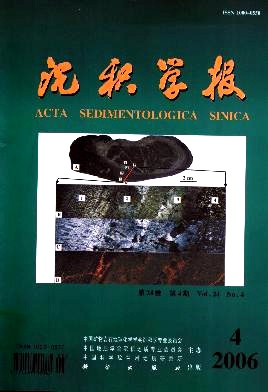Analysis on Unusual Biomarker Characteristics of Part Oils from Jiuxi Depression, Northwest China
- Received Date: 2005-05-17
- Rev Recd Date: 2005-10-18
- Publish Date: 2006-08-10
-
Key words:
- biomarker characteristics /
- correlation of oil with source /
- source rock /
- Jiuxi Depression
Abstract: The main oils of Jiuxi Depression have single characteristics of biomarker, it shows that the tricyclic terpane, C29-norhopane, C30-rearranged hopane and diasterane's content of these oils are low, gammacerane's content is high relatively and the isomerization parameter of sterane is lower,it is from 0.45 to 0.5, So it didn′t close to the terminal point of isomerization and it's source rock′s maturity isn′t high. This type oil is mainly from the laminar algal shaly dolomite of Xiagou formation that deposited in the reduction environment of Qingxi Depression region. Besides, there have another type of oil which it′s biomarker characteristics are different from the main part. These oils have relatively higher content of tricyclic terpane, C29-norhopane, C30-rearranged hopane ,diasterane and gammacerane, and part of it (such as the oils from long8,long4 and long10 wells) have high maturity. The isomerization parameter of sterane of these oils may reach from 0.56 to 0.58(it has closed to the terminal point of isomerization); it is the highest maturity oil of Jiuxi Depression. Especially, the main oils of this type have higher amount of C29ββ/(ββ+αα), it means that this oils have long distance migration. According to the result of analysis of depositional environment and native source precursor and contrast it with the oils which mainly from the Chijinbu formation of Jiudong Depression, we hold that those oils which have unusual biomarker characteristics might be in relation to the Chijinbu formation from deep part of Qingxi Depression.This viewpoint will have practical significance to the exploration of deep oil and gas in Jiuquan basin.
| Citation: | Analysis on Unusual Biomarker Characteristics of Part Oils from Jiuxi Depression, Northwest China[J]. Acta Sedimentologica Sinica, 2006, 24(4): 590-595. |






 DownLoad:
DownLoad: